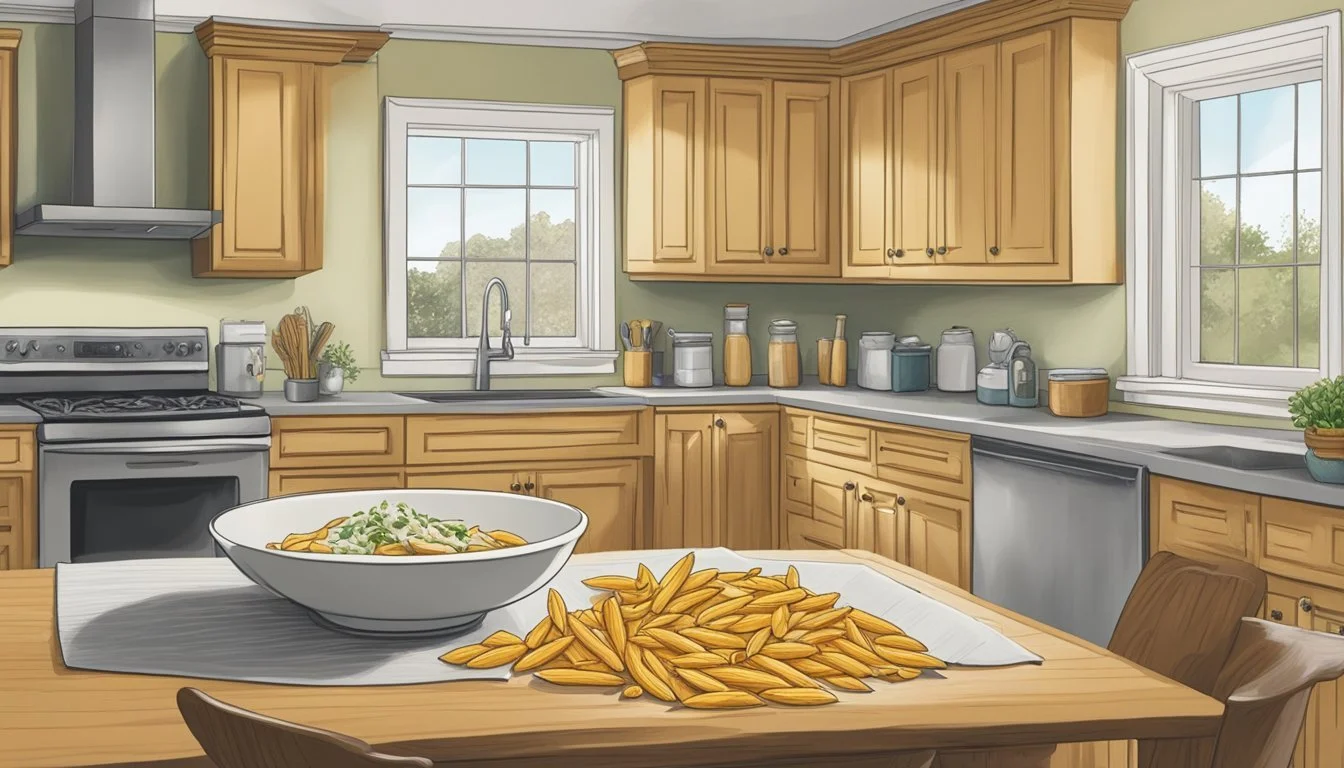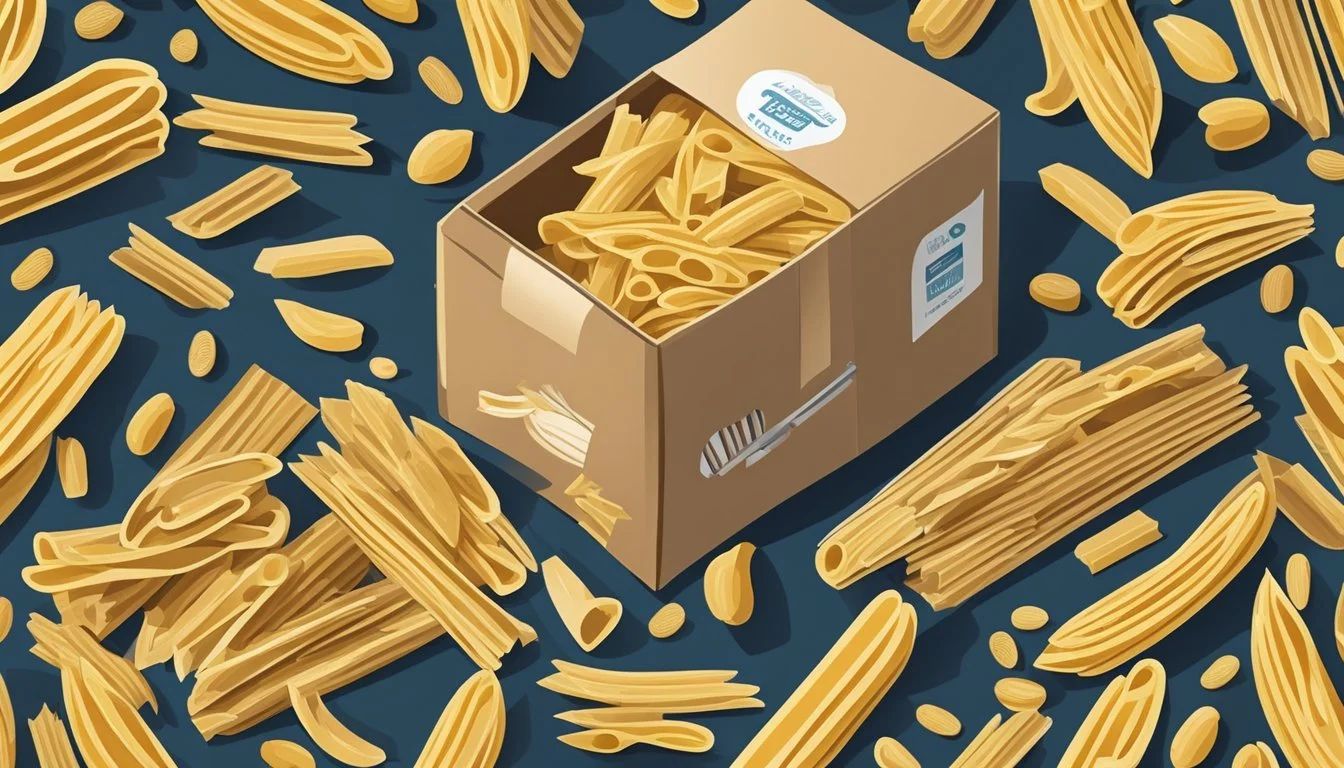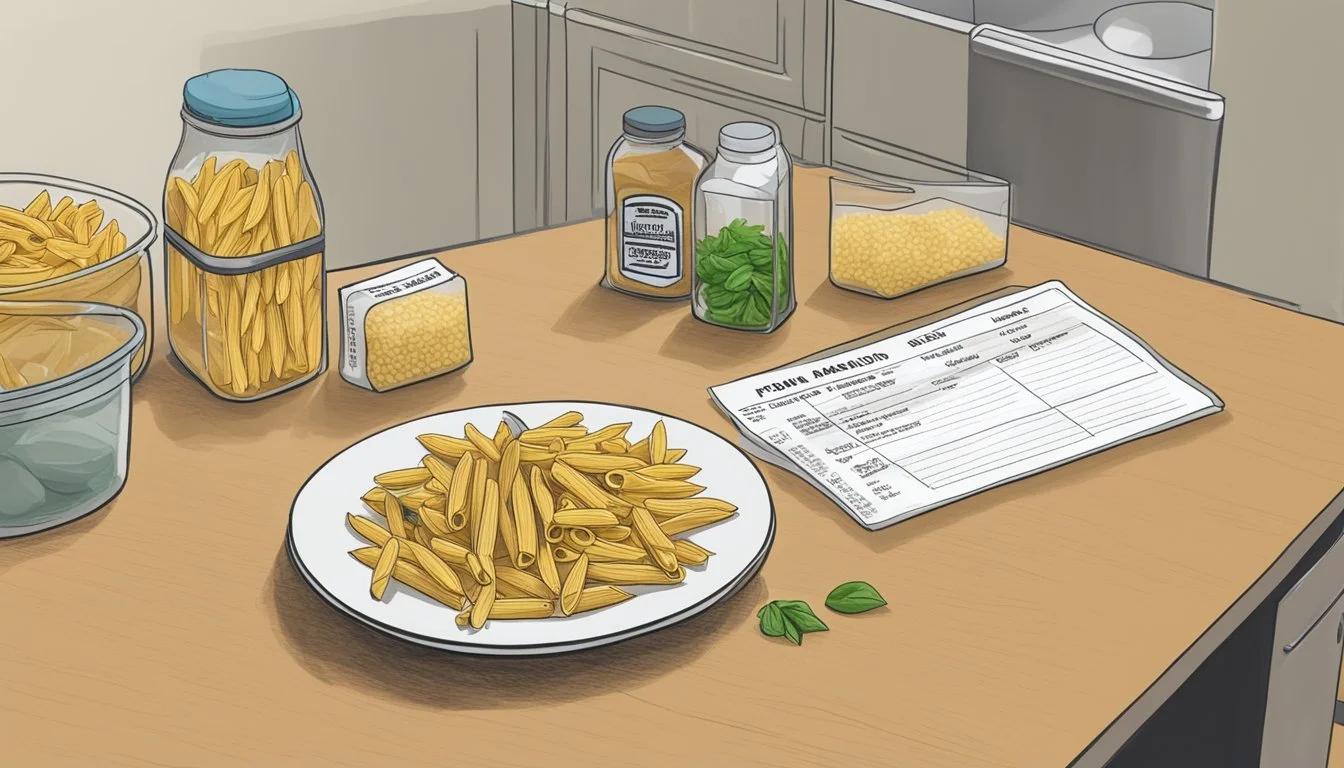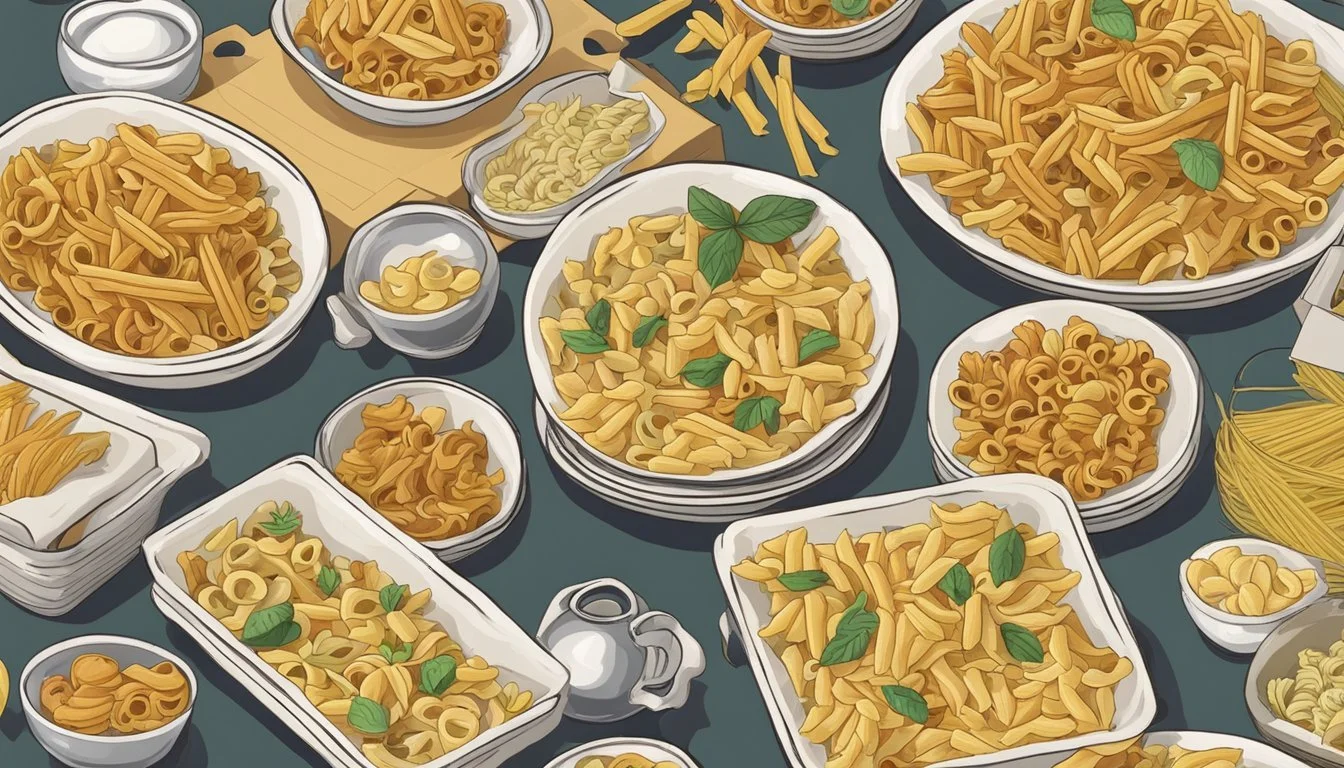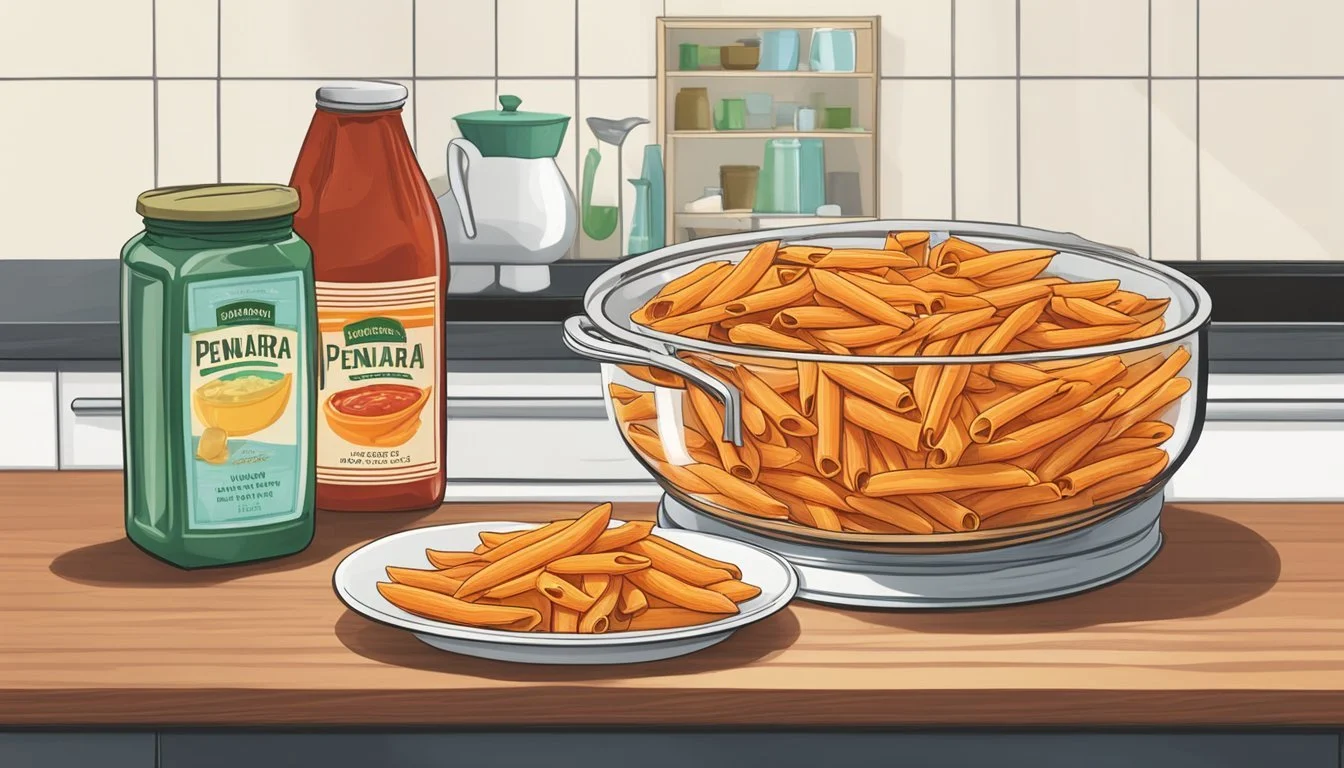Does Penne Go Bad?
Shelf Life and Storage Tips
Penne pasta is a popular pantry staple, but many wonder about its shelf life and whether it can go bad. Dry penne pasta can last 1-2 years beyond the date on the package, maintaining its taste and texture due to its low moisture content, which prevents mold and bacteria growth.
Cooked penne, on the other hand, has a much shorter lifespan. It generally lasts up to five days when stored in the refrigerator, depending on whether it was homemade or store-bought.
Understanding these timelines is crucial for both meal planning and food safety, ensuring that your pasta dishes are both delicious and safe to eat.
Understanding Pasta Types and Their Shelf Life
The shelf life of pasta varies depending on whether it is dry, fresh, or cooked. Each type has different storage requirements and durations for maintaining optimal quality.
Dry Pasta
Dry pasta, such as spaghetti, macaroni, and penne, is made from semolina flour and water. It generally has a long shelf life and can last for 1-2 years past its "best by" date if stored properly.
To store dry pasta, keep it in an airtight container in a cool, dry place. Mylar bags with oxygen absorbers can extend its shelf life indefinitely. This type of pasta is ideal for long-term storage due to its durability and lack of moisture.
Fresh Pasta
Fresh pasta, including varieties like tagliatelle, linguine, and tortellini, typically contains eggs and more water than dry pasta, which shortens its shelf life. Fresh pasta usually lasts 4-5 days beyond its "best by" date when stored in the refrigerator.
When refrigerating fresh pasta, place it in an airtight container to prevent it from drying out. For longer storage, fresh pasta can be frozen and will last up to 2 months. Ensure it is properly sealed to maintain quality.
Cooked Pasta
Cooked pasta, whether it's penne, fettuccine, or farfalle, has the shortest shelf life among pasta types. When stored in the refrigerator, cooked pasta remains safe to eat for 3-5 days.
For freezing, let the cooked pasta cool completely, toss it with a little oil to prevent sticking, and place it in an airtight container or freezer-safe bag. Properly stored, it can last up to 2 months in the freezer. Label containers with the date to track storage time effectively.
Signs of Spoilage in Pasta
Understanding how to identify spoiled pasta is crucial for maintaining food safety. Key indicators include visual changes, smells, and texture variations.
Visual Indicators
Visual signs of spoilage in pasta can be quite apparent. Mold growth is one of the most recognizable indicators. Look for white, green, or black spots on the pasta surface. These spots suggest the presence of mold, which renders the pasta inedible.
Discoloration is another sign. Fresh pasta usually has a uniform color, but spoiled pasta may develop patches of gray or white areas. Changes in color are a strong sign that the pasta is no longer safe to eat.
Lastly, if dry pasta appears unusually darkened or has visible cracks, it might also be a sign that the pasta is past its prime.
Olfactory Indicators
The smell of pasta can provide clear clues about its freshness. Spoiled pasta often emits a sour or off odor. Fresh pasta has a neutral, slightly wheaty smell, whereas any deviation from this standard scent hints at spoilage.
If the pasta smells musty or foul, it is best to discard it. These negative olfactory signs are often due to bacterial growth or mold that is not yet visible. Always trust your nose—if it doesn't smell right, it's probably not safe to eat.
For cooked pasta, lingering smells of the ingredients used are normal, but a rancid or pungent odor indicates spoilage.
Textural Indicators
The texture of pasta changes as it spoils. For cooked pasta, a slimy texture is a common sign of spoilage. This slime is often due to bacterial buildup and should not be consumed.
Dry pasta should retain a hard and brittle texture. If it feels damp or soft to the touch, it has likely absorbed moisture from the environment, which can lead to mold growth.
For fresh pasta, any stickiness or excessive dryness is a sign of spoilage. Fresh pasta should feel firm but pliable, not overly dry or sticky. Ensure to check the texture before cooking to avoid any health risks.
Optimal Storage Solutions for Pasta
Proper storage of pasta is essential to maintain its quality and prevent issues such as mold, pests, or spoilage. The storage methods vary depending on whether the pasta is dry, fresh, or cooked.
Storing Dry Pasta
Dry pasta is relatively easy to store thanks to its low moisture content, which inhibits bacterial growth. Unopened dry pasta can be kept in its original packaging in a cool, dry place such as a pantry or cupboard.
For opened packages, transferring the pasta to an airtight container or resealing the original packaging helps prevent exposure to moisture and pests. Storing in a dry, climate-controlled environment away from direct sunlight ensures longevity. Check for pantry moths or wheat-eating pests periodically to avoid infestations.
Storing Fresh Pasta
Fresh pasta contains more moisture, making it more perishable. It should be kept in the refrigerator in its original packaging or an airtight container.
To extend its shelf life, fresh pasta can be frozen. Before freezing, spread the pasta on a baking sheet to prevent clumping, then transfer to a freezer-safe bag or container. This prevents freezer burn and preserves texture. In the refrigerator, fresh pasta typically lasts up to 2 days, whereas it can last up to 2 months in the freezer.
Storing Cooked Pasta
Cooked pasta, once cooled, should be stored in the refrigerator within 2 hours to prevent foodborne illness. Use an airtight container to reduce moisture loss and contamination.
For longer storage, cooked pasta can be frozen. Tossing the pasta with a small amount of oil helps keep it from sticking together. Airtight containers or freezer bags work well for freezing, maintaining the pasta's texture and flavor. Cooked pasta can last for 3-5 days in the refrigerator and up to 2 months in the freezer without significant quality loss.
Best Practices for Extending Pasta's Freshness
Extending the freshness of pasta involves proper storage techniques in the pantry, refrigerator, and freezer to maintain its quality and flavor. Following these methods can help preserve pasta for long periods without compromising taste or safety.
Pasta in the Pantry
Dry, uncooked pasta is a shelf-stable product with a long shelf life. It's best to store it in a cool, dry place, away from direct sunlight. An airtight container is ideal for keeping out moisture and insects, which can degrade the pasta's quality.
Checking the best by date on the packaging can serve as a guideline, though pasta often retains its flavor and texture for up to two years beyond this date. This longevity is due to the low moisture content that inhibits bacterial and mold growth.
Pasta in the Refrigerator
When pasta is cooked, its shelf life decreases significantly. Leftovers should be stored in an airtight container and refrigerated to prevent drying out and absorbing odors from other foods.
Chilled pasta typically lasts 3-5 days in the fridge. Adding a bit of olive oil before storing can prevent sticking and help maintain its flavor. It's also advisable to keep cooked pasta separate from the sauce, meat, or vegetables to prolong its freshness.
Freezing and Reheating Pasta
Freezing cooked pasta is an excellent way to extend its shelf life up to two months. To properly freeze, allow the pasta to cool, then toss it with a light coating of olive oil before placing it in a freezer-safe bag or airtight container.
When ready to use, the pasta can be reheated either in the microwave or by boiling it briefly. If freezing pasta already mixed with sauce, meat, or vegetables, store it in individual portions to simplify reheating. The texture and flavor may vary slightly, but proper storage ensures it remains tasty.
Freezing is particularly effective for pasta salad, where the pasta can be combined with fresh herbs and cheese after thawing to restore its vibrant flavor.
Safety Precautions and Potential Health Hazards
When it comes to penne pasta, ensuring its safety is essential to avoid health risks. Understanding how to identify unsafe pasta and taking preventive measures can help mitigate the dangers of foodborne illnesses.
Identifying Unsafe Pasta
Identifying whether penne pasta has gone bad is crucial. Visual inspection is the first step. Look for signs of discoloration or mold, which indicate spoilage. Smelling the pasta can also reveal rancid or sour odors.
Dry, uncooked pasta that has been stored properly in a cool, dry place remains safer for a long period. But, once cooked, it becomes perishable and can attract insects and grow bacteria if not refrigerated.
Preventing Foodborne Illness
To prevent foodborne illnesses, proper storage practices are key. Cooked penne pasta should be kept in an airtight container and refrigerated.
Avoid leaving it at room temperature for more than two hours. Reheat it to a safe temperature, ensuring it reaches at least 165°F.
Regular inspection of stored dry pasta can also prevent issues with insects. Use by the date indicated and discard any pasta that shows signs of spoilage.
Following these guidelines ensures that penne pasta remains safe to consume, reducing the risk of food poisoning and other health hazards.
Pasta and Cuisine Variety
Pasta plays a significant role in various cuisines worldwide, offering unique shapes and sizes that cater to different dishes. Each type provides a distinct texture and flavor experience, making it a versatile ingredient in kitchens everywhere.
Pasta as a Universal Staple
Pasta enjoys universal love due to its adaptability and rich history. It pairs beautifully with a wide range of sauces, from creamy Alfredo to tangy marinara, allowing chefs and home cooks to create an array of dishes.
In Italy, pasta forms like penne, spaghetti, and fusilli are cherished. In Asia, similar noodles are integral to many traditional recipes. This versatility extends to the capacity of pasta to complement various vegetables, meats, and herbs.
Whether it’s a pasta salad with fresh peas, olives, and feta cheese, or a hearty pasta bake with rich tomato sauce and mozzarella, pasta fits flawlessly into diverse culinary traditions.
Creative Uses for Leftover Pasta
Leftover pasta opens the door to countless culinary innovations. With a bit of olive oil and a sprinkle of parmesan cheese, yesterday's pasta transforms into a quick, delicious meal.
Frittatas are another inventive way to repurpose pasta. Combining cooked pasta with eggs, cheese, and herbs, this dish is perfect for breakfast or dinner. Leftover pasta can also make excellent soups, adding texture and substance.
Lastly, creating a cold pasta salad with leftover pasta, mixed vegetables, and a zesty vinaigrette provides a refreshing dish for any occasion. The possibilities are virtually endless, reflecting the unmatched flexibility and continuous relevance of pasta in our kitchens.
Purchasing and Cooking Insights
When buying and preparing penne pasta, understanding how to select high-quality options and utilizing effective cooking techniques can significantly enhance the dish's taste and texture.
Selecting High-Quality Pasta
Choosing high-quality penne pasta involves paying attention to ingredients and expiration dates. Look for pasta made from 100% durum wheat semolina as it offers the best texture and flavor. Inspect the packaging for any signs of damage and ensure the expiration date is well in the future.
Purchasing in bulk can be economical, but proper storage is key. Dry pasta should be stored in a cool, dry place to maintain its shelf life, which can extend up to two years beyond the printed expiration date.
Culinary Tips for Pasta Preparation
Cooking penne pasta perfectly requires attention to a few key details. Use a large pot with plenty of water, bringing it to a rolling boil before adding a generous amount of salt. This helps to season the pasta from the inside out.
To avoid overcooking, follow the package’s cooking time, stirring occasionally, and testing for al dente texture a minute or two before the suggested time. After draining, add a small amount of oil or a knob of butter if you're not using it immediately, to prevent sticking.

